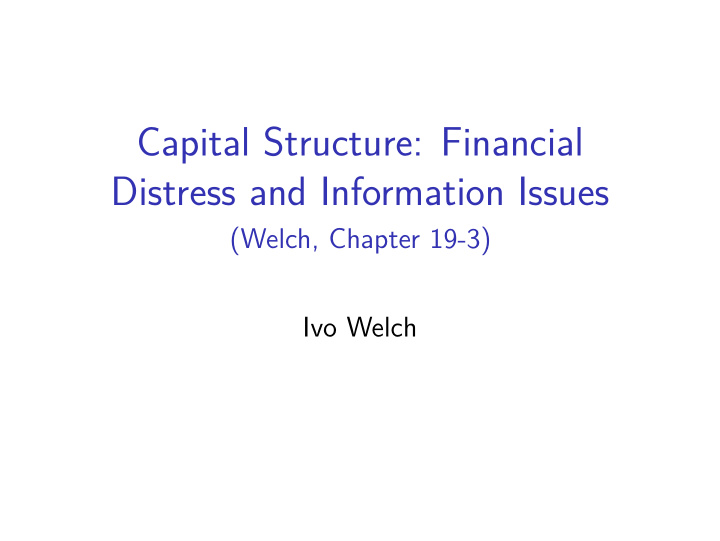



Capital Structure: Financial Distress and Information Issues (Welch, Chapter 19-3) Ivo Welch
Liquidity and Transaction Costs ◮ Could be direct costs ◮ Could be liquidity-related costs ◮ Could be issuing costs ◮ Could be recombining (M&M mitigation) costs. ◮ Could be dynamic.
Diffuse vs Concentrated ◮ Diffuse holdings spread risk but hurt control. ◮ Concentrated holdings expose to risk but help control. Classic tradeoff. (Different solutions outside US.) Realistically, most boards and executives are “out of control.”
Investment Banking Jobs As a capital-structure consultant, working for an investment bank, what is your job? Is it your job to convince the firm to have a good capital structure? [OR] Is it your job to convince the firm to change its capital structure?
What if? . . . you determine that the firm should have more debt and less equity? Is it your job to convince the managers that they should maximize shareholder wealth? How well will this go?
Summary Effect Does Favor Unmiticated Agency Equity Conflicts Effect Should Favor Financial Distress Usyally Equity Costs Personal Income Equity Taxes Debt Expropriation Equity Corporate Income Debt Taxes Too much Cash Flow Debt (Mitigating Agency Conflicts)
Adjustments? Adjustments can be difficult to make, especially in financial distress. Reputation can help.
Graph: WACC in an ICM Figure 1: Imperfect Market WACC
Graph Footnotes I made up the function. There are no well estimated empirical relations here. Especially with transaction costs, it is likely that the optimum is fairly flat over a wide low range. Firms should not want to be too far off, but optimizing capital structure is rarely a first-order issue, ◮ . . . if managers even care about shareholder value!
Graph: Conceptual WACC Figure 2: Conceptual WACC
Recommend
More recommend